India, a nation renowned for its agricultural diversity, greatly emphasizes the yield of vegetables per acre. The vegetable yield per acre is a critical measure to determine the productivity and profitability of farming practices in the region. However, many farmers in India often face challenges in achieving the optimal vegetable yield per acre.
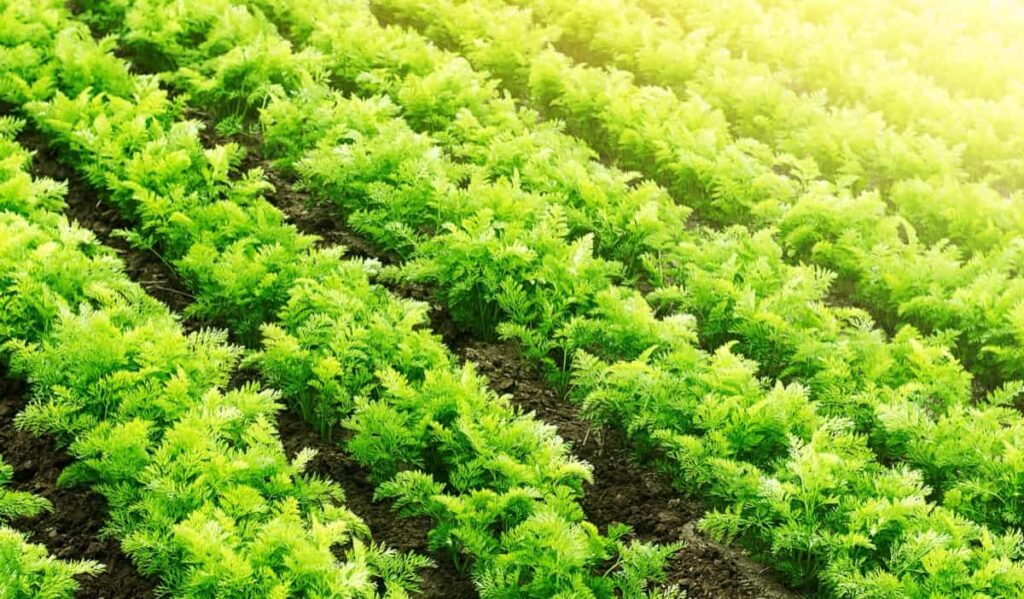
In India, vegetables per acre can vary significantly based on various factors, resulting in a fluctuating average vegetable yield per acre. Yet, with the right knowledge and techniques, it’s possible to elevate India’s vegetable yield per acre. Farmers can ensure a bountiful harvest by delving into the factors affecting vegetable yield per acre and understanding techniques for increasing vegetable yield.
Factors Affecting Vegetable Yield in India
A myriad of factors influence the vegetable yield per acre in India. The quality of the soil is paramount. If the soil lacks essential nutrients, the yield can be severely impacted. Apart from soil health, the choice of vegetable varieties plays a significant role. Some might be better suited for specific climates or terrains than others. Water availability and irrigation methods are other crucial components.
Over-watering or under-watering can adversely impact the yield. Pest and disease control is another vital factor. Crops can be decimated without proper pest management, impacting the acre’s vegetable yield. Additionally, modern agricultural practices, using quality seeds, and correctly applying fertilizers can significantly enhance or hinder the yield.
Importance of Yield Improvement in Vegetable Farming
Improving the vegetable yield per acre isn’t just about boosting profits; it’s necessary for sustainability and to meet the increasing demand for food. As the population grows, so does the demand for vegetables. The nation may face shortages if the average vegetable yield per acre in India doesn’t increase.
Moreover, with limited land resources, maximizing the vegetable yield per acre becomes essential to utilize the available land efficiently. An increase in yield also translates to better income for farmers, ensuring a better quality of life for them and their families. Besides the direct benefits, improved yield also means lesser use of resources per unit of produce, which translates to environmental benefits.
Best Practices for Increasing Vegetable Yield Per Acre
Farmers seeking tips to increasing vegetable yield per acre should begin by embracing some tried-and-true best practices. Firstly, soil testing should become a regular activity. It helps understand soil health and determine the right type of fertilizers. Proper crop rotation can prevent the depletion of vital nutrients from the soil and keep pests at bay. Choosing high-yielding and disease-resistant varieties can make a substantial difference.
In case you missed it: Fruit Yield Per Acre in India: Improve Yielding with These Simple Tips
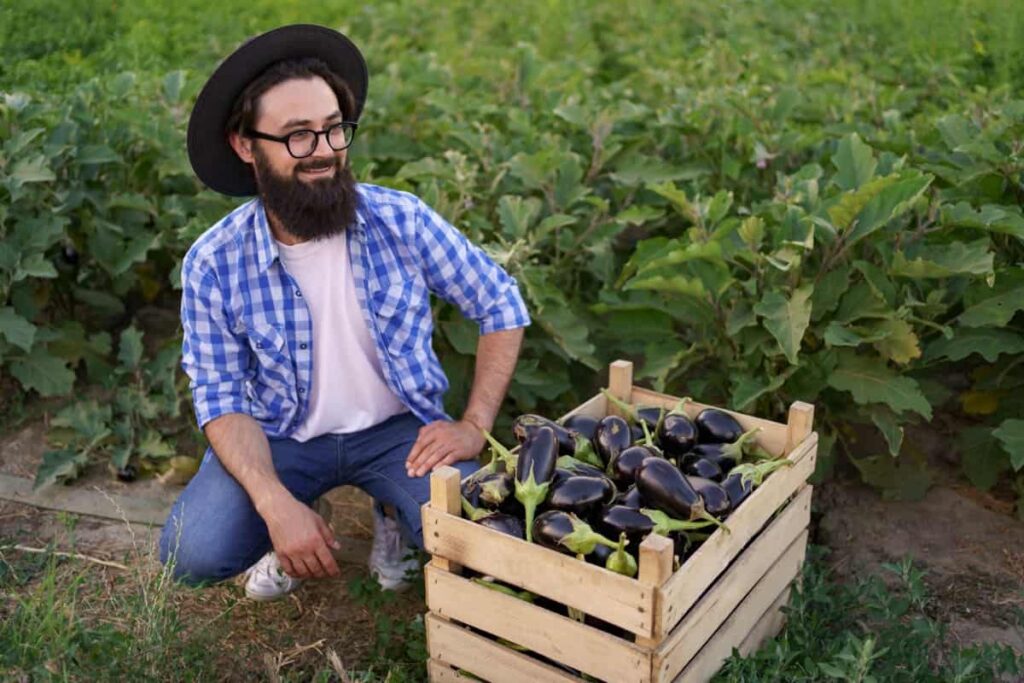
Adopting modern irrigation techniques, such as drip irrigation, ensures that plants receive the right amount of water. Regular monitoring and timely intervention can prevent pests and diseases, ensuring a healthy crop. Lastly, farmers should stay updated with the latest techniques for increasing vegetable yield and participate in training programs or workshops. This way, they can learn from experts and peers, continuously improving their farming practices to achieve India’s best vegetable yield per acre.
Soil Preparation Techniques for Higher Vegetable Yield
Soil is the foundation of any agricultural endeavor, and its preparation is crucial for achieving a higher vegetable yield. The process starts with a thorough soil test to identify its type, pH level, and nutrient profile. Once the analysis is done, organic matter like compost or manure should be incorporated to enhance the soil’s structure and fertility. Proper tilling ensures aeration, breaks up hard clods, and improves root penetration.
Leveling the land after tilling is also essential to ensure uniform irrigation. Furthermore, practicing crop rotation can prevent the depletion of vital nutrients and disrupt the life cycle of soil-borne pests. By implementing these soil preparation techniques, the groundwork is laid for robust and high-yielding vegetable crops.
Irrigation Methods and Water Management for Improved Yield
Water is the lifeline of crops, and its proper management can significantly influence vegetable yield. Different crops have varied water requirements, so knowing how much water a particular vegetable variety needs is vital. Drip irrigation is efficient as it delivers water directly to the plant’s root zone, minimizing wastage. Sprinkler irrigation can also benefit larger fields, ensuring even water distribution.
However, traditional flood irrigation might not be the most efficient but can be improved using leveled fields. Mulching is another technique that helps retain soil moisture and reduces evaporation. Regular soil moisture monitoring, possibly with soil moisture sensors, can guide irrigation timings. These irrigation methods and sound water management practices can significantly improve vegetable yield.
Nutrient Management Strategies for Maximizing Vegetable Yield
For vegetables to grow well and produce high yields, they need an array of macro and micronutrients. Once again, starting with a soil test can guide the necessary nutrient amendments. Balanced fertilization ensures robust growth, where crops receive all the essential nutrients in the right proportions. Applying organic matter, such as compost or green manure, can enrich the soil with nutrients and improve its texture.
Slow-release fertilizers can provide nutrients over an extended period, ensuring constant availability. Foliar sprays are another method to supply plants with quick nutrient boosts, especially micronutrients. Precision agriculture, where nutrient applications are guided by soil and plant health monitoring, can be a game-changer. By adopting these nutrient management strategies, the vegetable yield can be maximized.
Pest and Disease Control Measures for Higher Crop Productivity
Pests and diseases can drastically reduce vegetable yield if not managed appropriately. An integrated pest management (IPM) approach is a holistic method that begins with selecting disease-resistant varieties and maintaining a clean field by removing plant residues. Natural predators, like ladybugs or lacewings, can help control pests. Regular field scouting helps in the early detection of pests or diseases, allowing timely intervention.
In case you missed it: 12 Best Drip Irrigation Kits for 1-acre, 50, 100, and 1000 Plants: Price List Included
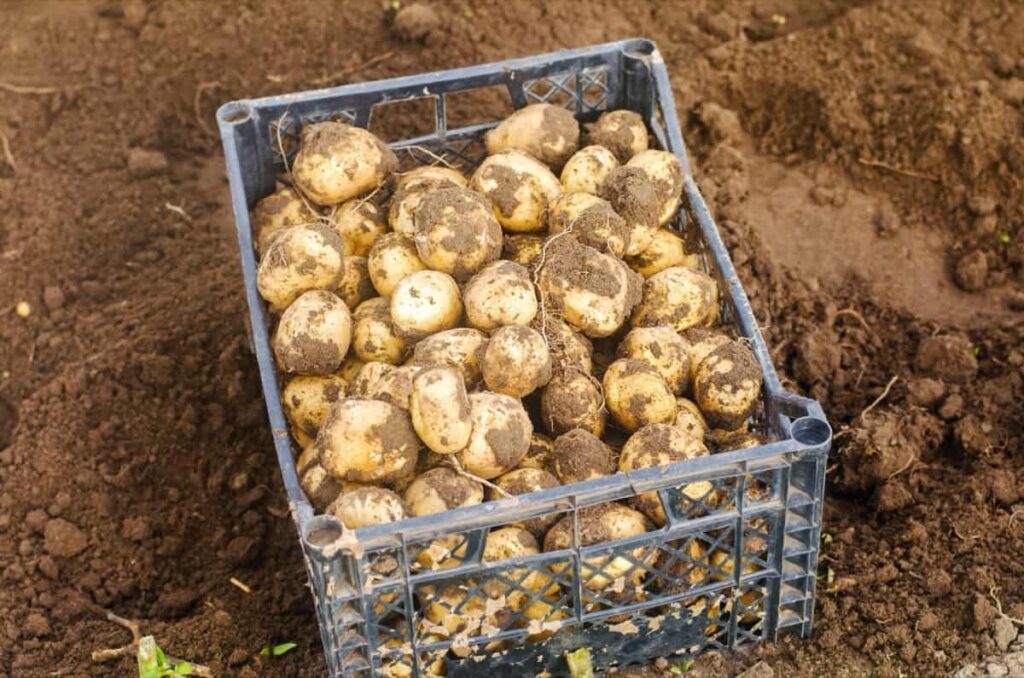
Using pheromone traps can manage pest populations by disrupting their mating. When chemical pesticides are necessary, choosing the right one, using the correct dosage, and rotating them to prevent resistance is essential. Regularly updating oneself with the latest pest and disease outbreaks and control measures is crucial. By implementing these pest and disease control measures, higher crop productivity can be achieved.
Crop Rotation and Intercropping Techniques for Enhanced Yield
Crop rotation means planting different kinds of crops in a certain order on the same land during different times of the year. This practice breaks the continuous supply of host plants to certain pests and diseases, reduces soil nutrient depletion, and disrupts the life cycle of soil-borne pathogens. Conversely, intercropping refers to growing two or more crops in the same field.
This optimizes space utilization and makes it difficult for pests to target one specific crop, thus acting as a natural pest deterrent. For instance, planting a leguminous crop with cereal can fix atmospheric nitrogen, benefiting the cereal. Through these techniques, soil health is preserved, and overall productivity is increased, leading to enhanced vegetable yield.
Effective Weed Management Practices for Increased Vegetable Yield
Weeds can be a major adversary for farmers, competing with crops for nutrients, water, and sunlight. For effective weed management, it’s essential first to identify the type of weeds present. Manual removal, while labor-intensive, can be effective for smaller fields. Using organic or synthetic materials, Mulching can suppress weed growth by blocking sunlight. When used in rotation, certain cover crops can also act as living mulches, hindering weed development.
Chemical herbicides should be used judiciously, ensuring the right type and quantity and always following label instructions. Additionally, regular monitoring and timely intervention are key. Implementing these weed management practices can lead to a significant increase in vegetable yield by minimizing competition.
Role of Genetic Varieties in Improving Vegetable Yield Per Acre
The choice of vegetable variety can be a game-changer when aiming for higher yields. Over the years, plant breeders have developed numerous high-yielding and disease-resistant varieties tailored for specific climatic conditions and soil types. These varieties, developed through conventional breeding or biotechnological methods, can withstand various stressors like drought, pests, or diseases.
Opting for such varieties not only ensures better yields but also reduces dependency on chemical inputs. Regularly updating one’s knowledge about the latest available varieties and choosing ones best suited for one’s farm can significantly enhance the vegetable yield per acre.
Importance of Proper Planting Techniques for Higher Crop Productivity
Planting might seem simple, but the method and timing can drastically affect the crop outcome. Factors such as plant spacing, sowing depth, and planting timing play pivotal roles. Ensuring the right spacing allows plants to grow without competing for resources. The depth of sowing seeds can affect germination rates, as some seeds require sunlight while others need darkness.
In case you missed it: A Comprehensive Analysis of Crop Yield Per Acre in India: Yield Improvement Tips
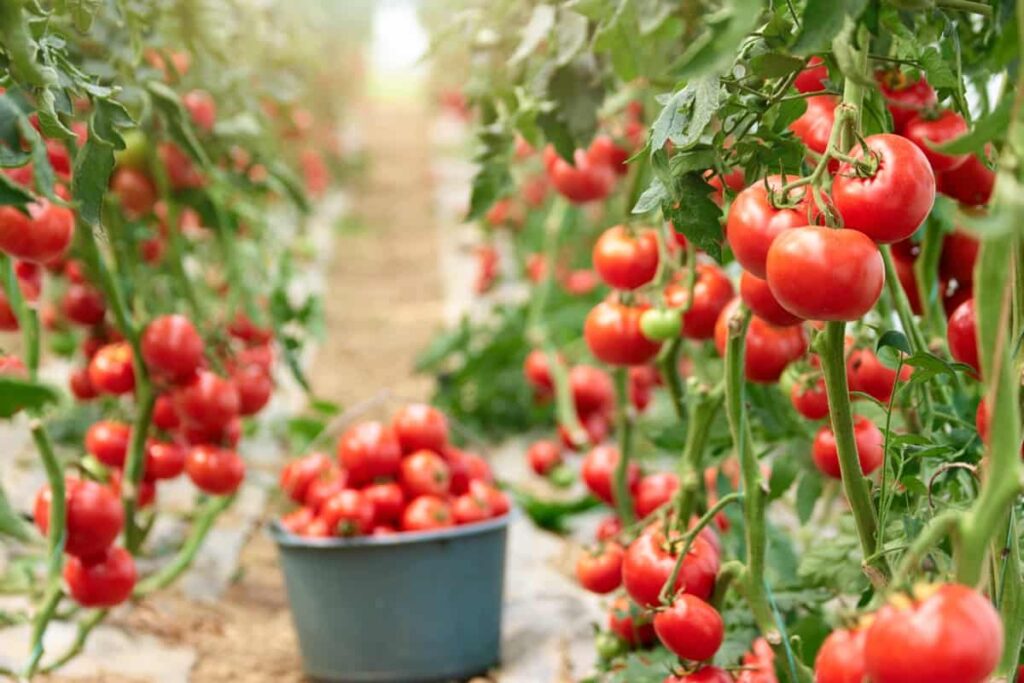
Timing is equally crucial; planting too early or too late can expose plants to unfavorable conditions, impacting growth. Techniques like transplanting, where seedlings are grown in a controlled environment before moving to the field, can ensure a healthy start. Understanding and implementing proper planting techniques are fundamental to achieving higher crop productivity.
Harvesting and Post-Harvest Handling Tips to Maintain Yield Quality
If done incorrectly, the harvesting process can adversely affect the quality and shelf-life of vegetables. Harvesting at the right maturity stage is essential, as premature or overripe produce can compromise quality. Using sharp and sanitized tools can prevent damage and reduce the risk of disease transmission. Once harvested, immediate post-harvest handling is crucial. Cooling vegetables rapidly, known as pre-cooling, helps extend freshness by slowing down metabolic processes.
Proper grading, based on size, weight, or appearance, ensures uniformity, which consumers prefer. Storage conditions play a significant role, too; maintaining appropriate temperature, humidity, and ventilation can drastically reduce spoilage. Packaging materials should allow for adequate air circulation and protect from physical damage. By following these harvesting and post-harvest handling tips, farmers can ensure that the yield’s quality is maintained from the field to the market.
Market Analysis and Economic Considerations for Vegetable Yield Improvement
Improving vegetable yield isn’t merely about agronomic practices; understanding the market dynamics is equally crucial. Conducting a thorough market analysis provides insights into which vegetables are in demand, their preferred sizes, and quality parameters. This knowledge can guide planting decisions, ensuring better returns on investment. Economic considerations such as cost of inputs (seeds, fertilizers, labor), expected yield, and projected market prices are crucial for determining profitability.
It’s also essential to consider the value chain, including transportation, storage, and processing costs. Exploring alternative markets, like farmer cooperatives or direct-to-consumer models, can sometimes fetch better prices. Awareness of government policies, subsidies, or grants can also affect economic decisions. By intertwining market analysis with farm decisions, farmers can ensure higher yields and improved profitability.
Case Studies and Success Stories of High-Yield Vegetable Farming in India
With its vast agricultural landscape, India has numerous success stories of farmers achieving high-yield vegetable farming. One notable instance is of a farmer in Maharashtra who, through the adoption of precision farming and drip irrigation, managed to triple his yield of tomatoes within a single season. Another case from Tamil Nadu showcases a group of women farmers who incorporated vermicomposting and organic pest control techniques, resulting in a significant surge in brinjal and chili yields.
In case you missed it: How to Calculate Number of Fruit Trees Per Acre and Per Hectare
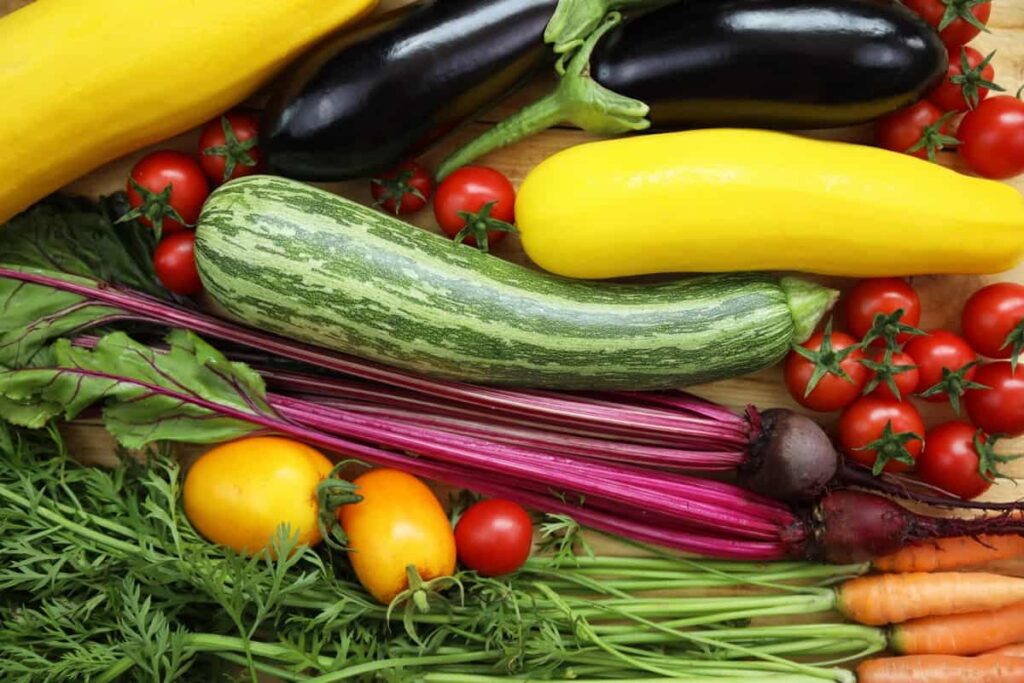
In Punjab, a farmer collaborated with agricultural scientists to experiment with crop rotation and soil health restoration, leading to a substantial increase in potato yield. These stories underline a common theme: the blend of traditional knowledge with modern techniques and the willingness to innovate can lead to remarkable results in vegetable yield improvement.
Vegetable Yield Per Acre in India
| Vegetable | Yield (Tonnes/Acre) |
| Tomato | 10-15 |
| Potato | 15-20 |
| Brinjal (Eggplant) | 10-12 |
| Cabbage | 12-15 |
| Cauliflower | 10-13 |
| Onion | 10-14 |
| Spinach | 8-12 |
| Carrot | 10-15 |
| Okra (Lady’s finger) | 5-8 |
| Beans (Green) | 4-7 |
| Peas | 2-3 |
| Capsicum (Bell pepper) | 10-13 |
| Bitter gourd | 5-7 |
| Bottle gourd | 10-15 |
| Cucumber | 8-12 |
| Radish | 15-20 |
| Beetroot | 15-18 |
| Pumpkin | 10-14 |
| Chili pepper | 2-4 |
| Coriander (leaves) | 1-2 |
| Mushroom | 5-8 (in controlled environments) |
| Zucchini | 10-13 |
| Broccoli | 5-7 |
| Lettuce | 4-6 |
| Ginger | 4-6 |
| Garlic | 3-5 |
Conclusion
Achieving an optimal vegetable yield per acre in India is a multifaceted endeavor encompassing a broad range of practices from pre-planting to post-harvest. Success in this endeavor relies upon a keen understanding and meticulous application of various factors, including soil preparation, crop choice, planting techniques, nutrient management, irrigation methods, pest and disease control measures, harvesting procedures, and post-harvest handling.
In case you missed it: Organic Farming Profits Per Acre in India: Cost of Cultivation, Production Key Rules to Double Returns
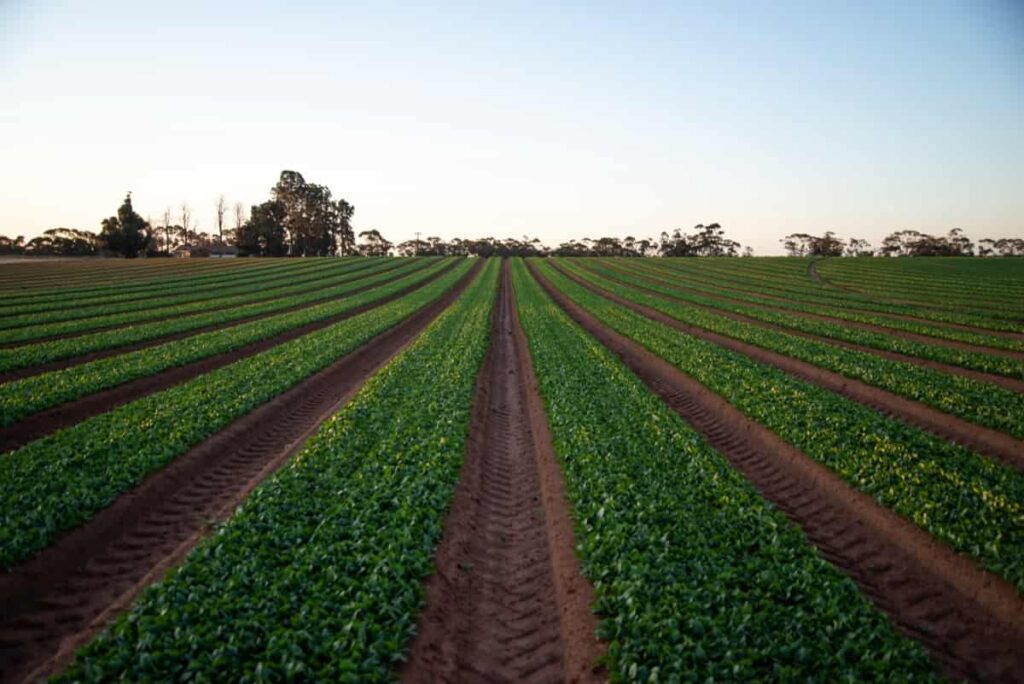
Each of these factors contributes to maximizing the yield and ensuring the produce retains its quality until it reaches the consumer. It’s also imperative for farmers to stay abreast of the latest agricultural technologies and practices, as these innovations continually offer new ways to enhance productivity and efficiency in vegetable farming.
Moreover, it’s crucial to emphasize that the quest for improving vegetable yield per acre does not operate in isolation. It is tightly interwoven with market dynamics and economic considerations that influence the profitability and sustainability of farming practices. The inspiring case studies and success stories from different parts of India exemplify the transformative power of knowledge, innovation, and determination in high-yield vegetable farming.
These tales provide valuable lessons and serve as beacons of motivation for other farmers to adopt best practices and strive for excellence in their agricultural pursuits, ultimately contributing to the nation’s food security and economic stability in the agricultural sector. Through robust field practices and astute economic planning, Indian farmers can realize the dream of significantly enhanced vegetable yield per acre.
- Management Pests and Diseases in Your Cotton Field
- Sheep Farming Business Plan for Beginners
- Aquaponic Farming at Home: A Step-By-Step Guide
- Profitable Village Farming Business Ideas in 2024
- High-Yield Aquaculture: Fast-Growing Fish for Farming
- Effective Fish Pond Construction Techniques for Beginners
- Irrigation and Water Management in Pineapple Farming
- Blossom to Harvest: Mastering Flowering and Pollination in Papaya Farming
- Pig Fattening Essentials: From Selection to Sale for Beginners
- Raising Wagyu Cattle: A Complete Guide for Premium Beef Production
- Soil Types and Their Water Holding Capacity
- Optimizing Irrigation Schedules for Coconut Groves for Enhanced Yield
- Espresso Your Garden: Coffee Grounds for Healthier Acid-Loving Plants
- The Best Soil Mix for Snake Plants: How to Mix Your Own Snake Plant Soil
- Green Thumb Success: Expert Tips for Cultivating Greenhouse Beans All Year Round
- Bloom All Year Round: The Ultimate Guide to Indoor Hyacinth Care
- Eco-Friendly Gardening: How to Make Liquid Fertilizer from Kitchen Waste
- Ultimate Guide to Grow Anise in Pots: Explore Seed Propagation to Harvesting
- Guide to Raising Chester White Pigs: Discover Breed Facts to Growth Management
- Mastering the Elegance: The Ultimate Guide to Weeping Cherry Tree Care, Planting, and Maintenance
- Ultimate Guide to Planting Garlic in Grow Bags: Growing Strategies for Beginners
- How to Fix Spider Plant Leaf-Related Problems: Natural and Organic Remedies
- 10 Reasons Why Your Tulsi Plant is Shedding Leaves: Home Remedies and Solutions
- Optimizing Growth and Yield: The Advantages of Palm Bunch Ash Fertilizer
- Utilizing Neem Oil Extract as a Natural Pesticide for Hydrangea
- From Soil to Harvest: Various Ways in Which Farmers Can Use AI Tools
- Steps to Encourage and Induce Citrus Flowers: A Comprehensive Guide
- How to Fix Snake Plant Leaf-Related Issues: Natural and Organic Remedies
- Transform Your Garden into a Fragrant Oasis with Raat Ki Rani (Night Blooming Jasmine)
- Discover the Ideal Chicken Breeds for Philippine Farms
- How to Create a Poultry Egg Farm Business Plan for Profits
- Grow Lemon Cucumbers Like a Pro: Insider Techniques for Bountiful Yields
- Ultimate Guide to Caring for Your Pink Princess Philodendron: Tips for Thriving Variegation
- Areca Nut Profit Per Acre: Calculating Yield and Cost of Cultivation
- How Kaveri Chicken is Becoming a More Profitable Breed in Indian Backyards
- Transform Your Barn: 9 Steps to Convert a Horse Stall into a Chicken Coop
